Today’s Current Affairs: 24th July 2025 for UPSC IAS exams, State PSC exams, SSC CGL, State SSC, RRB, Railways, Banking Exam & IBPS, etc
Table of Contents
Sea Slugs:
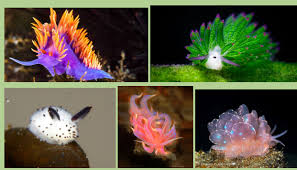
Scientists recently identified and formally described two previously unknown species of wart sea slugs found in the waters off North Sulawesi, Indonesia, named Phyllidia ovata and Phyllidia fontjei.
- Sea slugs, also known as Nudibranchs, are soft-bodied marine molluscs found in all the world’s oceans, from shallows to the deep sea.
- They belong to Phylum Mollusca and Class Gastropoda.
- They look like naked snails, i.e., without shells.
- These slow-moving grazers consume algae, sponges, and other small invertebrates, showcasing a range of feeding habits.
- They are usually found in coral reefs and their presence is a significant indicator of a strong coral ecosystem.
- Sea slugs are renowned for their vibrant colours and intricate patterns, which often serve as warning signals to predators due to their toxicity.
- They get their toxicity from the creatures they eat, and some sea slugs can even keep the stinging cells of jellyfish inside their bodies.
- Beyond their striking appearance, sea slugs possess other intriguing traits.
- Some can photosynthesise, producing their own food with sunlight.
- Others regenerate lost limbs, and a few can steal genes from their prey and incorporate them into their DNA.
- Most sea slugs are active throughout the day, but some species are also nocturnal.
Lumpy Skin Disease : Emerging Daily
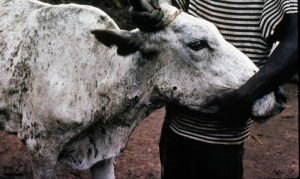
With over 900 cattle infected with Lumpy Skin Disease (LSD) and more cases emerging daily, Pune district is staring at a potential decline in milk supply.
- Lumpy Skin Disease (LSD) is a highly infectious viral disease that affects all breeds of cattle and water buffalo.
- It is caused by the lumpy skin disease virus (LSDV), a member of the genus Capripoxvirus (CaPV) within the family Poxviridae (smallpox and monkeypox viruses are also a part of the same family).
- LSDV is not zoonotic, so humans cannot get infected by the virus.
- The disease is endemic in Africa and the Middle East and has been spreading increasingly in Europe and Southeast Asia over recent years.
- The disease is most common in the wet summer and fall months, especially in low-lying areas near water bodies, but it can also occur in the dry season.
- LSD is a highly host-specific disease. It primarily affects cows and to a lesser extent, buffalo.
- The disease is more severe in cattle compared to buffaloes in terms of morbidity and mortality.
- The disease is of economic importance as it can cause a temporary reduction in milk production, temporary or permanent sterility in bulls, damage to hides and, occasionally, death.
- It is transmitted by blood-feeding insects, such as certain species of flies, mosquitoes, or ticks.
- Infected animals shed the virus through oral and nasal secretions, which may contaminate common feeding and water troughs.
- Thus, the disease can either spread through direct contact with the vectors or through contaminated fodder and water.
- The disease is characterized by high fever and enlarged superficial lymph nodes on the skin and peculiar multiple nodules or lumps on the skin.
- It can also lead to death, especially in animals that have not previously been exposed to the virus or have low immunity.
- There is no treatment for the virus, so prevention by vaccination is the most effective means of control.
- The infected animals receive supportive care, which involves the use of antibiotics, painkillers, and wound care sprays to treat symptoms.
Financial Inclusion Index:
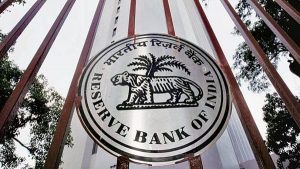
The Reserve Bank of India has informed that the Financial Inclusion Index of the FI index for Financial Year 2025 has improved and stands at 67 percent as compared to 64.2 percent for FY 2024.
- The FI-Index has been conceptualised as a comprehensive index incorporating details of banking, investments, insurance, postal as well as the pension sector in consultation with Government and respective sectoral regulators.
- The index captures information on various aspects of financial inclusion in a single value ranging between 0 and 100, where 0 represents complete financial exclusion and 100 indicates full financial inclusion.
- The FI-Index comprises three broad parameters, Access (35%), Usage (45%), and Quality (20%) with each of these consisting of various dimensions, which are computed based on a number of indicators.
- The Index is responsive to ease of access, availability and usage of services, and quality of services, comprising all 97 indicators.
- A unique feature of the Index is the Quality parameter which captures the quality aspect of financial inclusion as reflected by financial literacy, consumer protection, and inequalities and deficiencies in services.
- The FI-Index has been constructed without any ‘base year’ and as such it reflects cumulative efforts of all stakeholders over the years towards financial inclusion.
- The FI-Index will be published annually in July every year.
- The index also includes data from various sectors such as banking, investments, insurance, postal services, and pensions, making it a comprehensive measure of financial inclusion in the country.
Kanniyakumari Wildlife Sanctuary : Moth Species
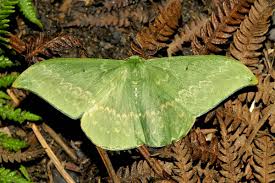
A research scholar has documented around 450 species of moths at the Kanniyakumari Wildlife Sanctuary.
- It is located in the Kanyakumari district of Tamil Nadu.
- It is situated near the southernmost tip of India at the confluence point of three major water bodies namely; Arabian Sea, Bay of Bengal, and the Indian Ocean.
- The sanctuary is bounded at North by KalakkadMundanthurai Tiger Reserve, South by Kodayar left bank channel and Thovalai channel and in West by Kerala State.
- The area is also home to several tribal communities living in adjoining reserve forests.
- Seven rivers have their origin in this forest including the famous Pahrali and Thamirabarani rivers.
- The natural vegetation of this region represents southern thorn forests, dry deciduous, moist deciduous, semi evergreen forests and ever green hill sholas with grassy downs.
- It is home to Indian Bison, Elephant, Nilgiri Tahr, Sambar Deer, Lion-tailed Macaque and also reptiles such as Indian Rock Python.
Lantana camara species : Ornamental Plant
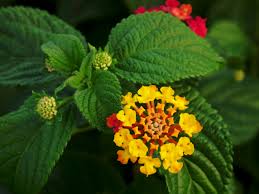
Lantana camara species introduced decades ago as an ornamental plant, now infests approximately 3,25,282 hectares of forests in Himachal Pradesh, posing a threat to the State’s native biodiversity.
- Lantana camara is an invasive alien species.
- It is a pantropical weed species, is native to the tropical and sub-tropical regions of Central and South America.
- It is an exotic weed that aggressively proliferates and forms a dense mesh of bushes.
- In India, it was first introduced in the early 18th century, and since then, it has invaded almost all the tropical areas across the country.
- It has been observed that it has been infesting from lower areas towards higher regions.
- It is known to produce allelochemicals that restrict the growth of other species under its canopy.
- Hence, it replaces native flora, resulting in homogeneous vegetation, significantly contributing to decline in biodiversity.
- Its management can be achieved by using its biomass for socioeconomic purposes — its timber for making furniture and also as fuelwood, etc.
- Its biomass can be used to produce organic compost and vermicompost, which will be better for organic farming and an alternative to inorganic manures available in the market.
Human Rated Launch Vehicle (HLVM3):

Union Minister confirmed in Parliament that India has completed the development and ground testing of the Human Rated Launch Vehicle (HLVM3) for the Gaganyaan mission, marking a key milestone ahead of India’s first human spaceflight.
- The long-term vision includes the Bharatiya Antariksha Station by 2035 and Indian Moon Landing by 2040.
- HLVM3 is India’s first human-rated launch vehicle, adapted from the proven LVM3 (GSLV Mk III) platform, designed to safely carry astronauts (Gaganyatris) into Low Earth Orbit under the Gaganyaan programme.
- Developed By Indian Space Research Organisation (ISRO)
- Designed under the guidance of the Human Space Flight Centre (HSFC)
- Mission Aim:
- Enable safe launch, orbital insertion, and return of Indian astronauts.
- Form the backbone for future long-term missions like Bharatiya Antariksha Station and Indian lunar landing.
- Build self-reliant capacity in human space exploration and demonstrate advanced space safety systems.
- Key Features of HLVM3:
- Two S200 solid rocket boosters, L110 liquid core stage, and C25 cryogenic stage.
- Capable of lifting ~10 tonnes to Low Earth Orbit.
- Systems upgraded for redundancy, fault-tolerance, and escape options.
- Designed with higher safety margins and enhanced quality assurance protocols.
- Five types of motors already tested.
- Enables safe ejection of crew during ascent in emergencies.
- Operational from liftoff to orbital injection phase.
- Crew Module (CM) tested for re-entry, parachute deployment, thermal resistance. and Service Module (SM) tested for re-entry, parachute deployment, thermal resistance.
National Sports Governance Bill, 2025:
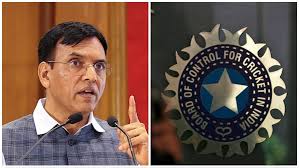
The Central Government introduced the National Sports Governance Bill, 2025 in the Lok Sabha to overhaul India’s sports administration framework.
- It aims to replace the 2011 Sports Code with a legally enforceable, athlete-centric governance system, bringing bodies like BCCI under its ambit.
- The National Sports Governance Bill, 2025 is a landmark legislation aiming to ensure transparency, fairness, and accountability in National Sports Federations (NSFs). It introduces legal safeguards for athletes, standardized elections, grievance redressal, and institutional oversight.
Key Features of the Bill:
- Legal Status to Governance Norms: Converts previously executive guidelines into binding law, ensuring enforceability across NSFs and sports bodies.
- BCCI Under Governance Framework: BCCI to be recognized as an NSF, requiring annual recognition and resolution of all disputes through the National Sports Tribunal.
- Statutory Institutions Introduced:
- National Sports Board (oversight and compliance)
- National Sports Tribunal (dispute resolution)
- National Sports Election Panel (election integrity)
- Executive bodies must include minimum 4 women and 2 elite athletes, enhancing gender and athlete participation.
- Officials under 70 can complete their term; 3 consecutive terms of 4 years allowed with 1-term cooling-off.
- Safe Sport Mechanism & Athlete Protection: Provides legal backing to safe sport protocols, internal grievance systems, and athlete welfare provisions.
Ending Manual Scavenging:
A Ministry of Social Justice study analyzed 54 hazardous cleaning deaths linked to manual scavenging (out of 150 nationwide) across 8 States/UTs during 2022–2023. In 90% of cases (49 out of 54), no safety equipment was provided. The rest had minimal protection—gloves in 5 cases and gloves with gumboots in 1. Most deaths occurred in the absence of mechanized equipment such as suction pumps or robotic cleaners. In most cases, agencies lacked equipment readiness, and awareness drives were either absent or incomplete, even in places where they were conducted.Many workers entered sewers without consent, and even when written consent was taken, they were not informed of associated risks.Most workers were hired informally on individual contracts, with only a few as direct government or outsourced PSU employees.
Bharat NCX 2025:
Bharat NCX 2025, India’s premier national cybersecurity exercise ( 21st July– 1st August, 2025), was inaugurated with the theme ‘Enhancing the Operational Preparedness of Indian Cyberspace’. Conducted by National Security Council Secretariat (NSCS) in collaboration with Rashtriya Raksha University (RRU). Objective is to Strengthen cyber resilience through real-world attack simulations (critical infrastructure breaches, deepfakes, and AI-driven malware).
India has achieved 20% ethanol blending in petrol by 2025:
India has achieved 20% ethanol blending in petrol by 2025 five years ahead of the original 2030 target. This milestone was announced by Union Petroleum Minister. The Ethanol Blended Petrol (EBP) Programme aims to blend ethanol with petrol to reduce reliance on fossil fuels, enhance energy self-sufficiency, and lower carbon emissions. Launched in 2003, scaled up post-2014. Implemented by the Ministry of Petroleum and Natural Gas, in coordination with the Ministry of Food Processing and Ministry of Agriculture.
Targets:
- Original target: 20% blending by 2030 (National Policy on Biofuels 2018).
- Achieved: 20% blending in 2025, 5 years early.
Gaza Hunger Crisis:
The Gaza hunger crisis has escalated, with over 2 million people now food insecure and dozens dying from starvation, as confirmed by Palestinian and UN agencies. WHO has called this a “man-made mass starvation”, exacerbated by aid blockades and attacks near food distribution points. It Is asevere man-made hunger crisis unfolding in Gaza due to ongoing military conflict, blockade of aid, and collapse of humanitarian supply chains.
Fino Payments Bank Launches “GATI” Savings Account:
Fino Payments Bank has launched a new digital savings account named “GATI” a term meaning “speed” in several Indian languages with the aim to deepen UPI transaction penetration in rural and semi-urban areas of West Bengal. By offering an affordable, zero-balance account with instant transaction capability, Fino seeks to empower digitally-inclined customers, especially those underserved by traditional banking systems.Fino Payments Bank has built its presence by leveraging a merchant-based banking model, especially in areas with limited access to formal banking infrastructure. With over 40,000 merchant points in West Bengal, the bank aims to facilitate easier onboarding into the digital financial ecosystem. The rise in smartphone penetration and the government’s push for Digital India have made it necessary to design banking products that are fast, easy, and inclusive.
Launch of Samudra Prachet:
The Indian Coast Guard (ICG) launched ‘Samudra Prachet’, the final of two indigenous Pollution Control Vessels (PCVs), on July 23, 2025, at Goa Shipyard Ltd (GSL). This vessel will play a crucial role in enhancing India’s oil spill response capabilities within its Exclusive Economic Zone (EEZ), supporting the government’s Atmanirbhar Bharat initiative through indigenisation of strategic maritime assets.The need for dedicated pollution control vessels arose from growing environmental concerns linked to increased maritime traffic and industrial activities in the Indian Ocean Region. In response, the Ministry of Defence sanctioned the construction of two PCVs by Goa Shipyard Ltd, a premier defence PSU. The first PCV was launched in August 2024, and the second, Samudra Prachet, marks the completion of this strategic initiative.
RBI’s approval for Warburg Pincus to invest in IDFC First Bank:
The Reserve Bank of India (RBI) has granted approval to Warburg Pincus, a prominent global private equity firm, to acquire up to 9.99% stake in IDFC First Bank. The ₹4,876 crore investment is expected to enhance the bank’s capital base and support its growth ambitions.The investment proposal was first announced in April 2025 and subsequently received clearance from the Competition Commission of India (CCI) on June 3, 2025. The investment is being routed through Currant Sea Investments B.V., an affiliate of Warburg Pincus.
SBI Adjudged World’s Best Consumer Bank 2025 by Global Finance Magazine:
The State Bank of India (SBI) has been named the World’s Best Consumer Bank for 2025 by the reputed Global Finance magazine, recognizing the bank’s customer-centric innovations and strong digital presence. This global recognition reinforces SBI’s commitment to inclusive and modern banking.SBI, India’s largest public sector bank, has consistently worked towards transforming retail banking through technology adoption, rural outreach, and customer convenience. Over the years, it has played a pivotal role in financial inclusion and expanding banking access in underbanked regions.




